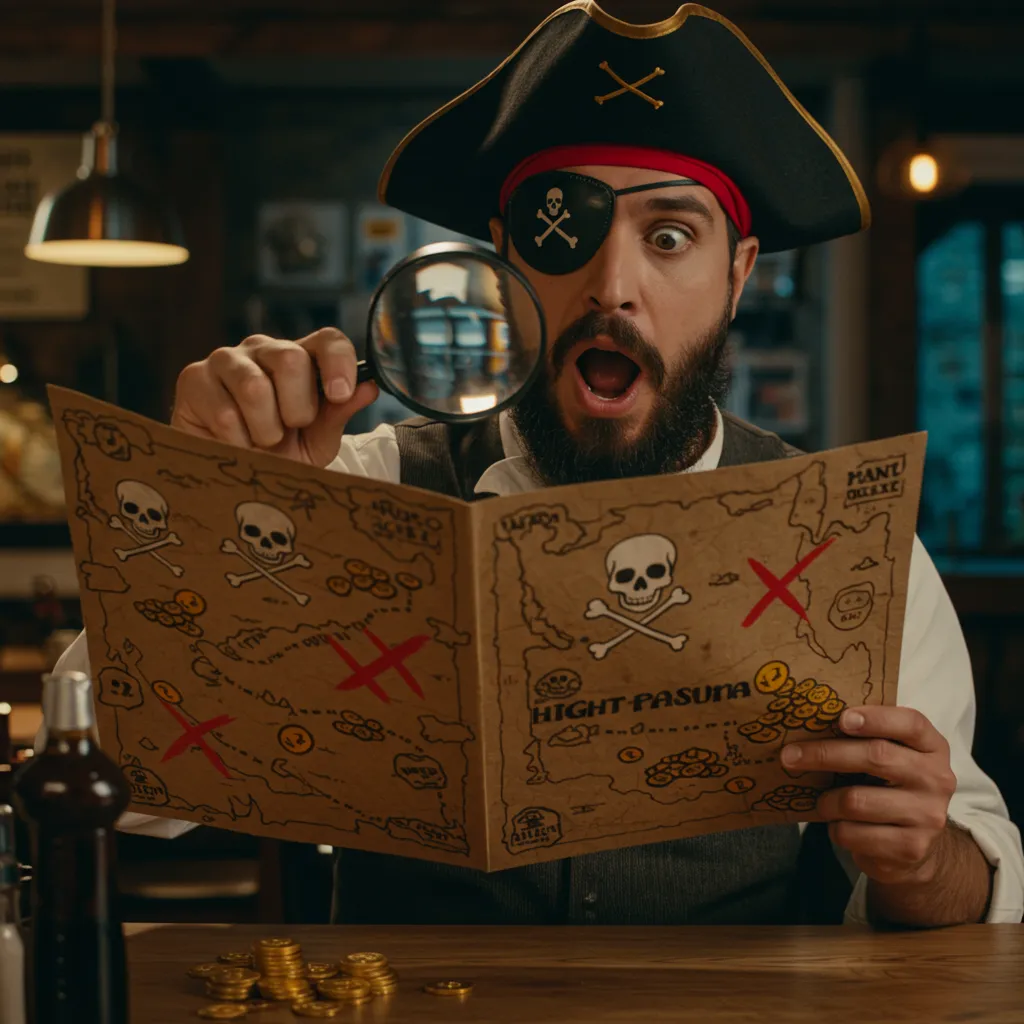
Menu. Sales. Loss.
Best-Seller Bob is proud of his signature burger.
It's his #1 seller. Customers love it. They rave about it on reviews. It's what he's known for.
There's just one problem: He loses $2.30 on every single one he sells.
His food cost on that burger? 47%. Industry standard is 28-32%.
But it's his most popular item, so he keeps it front and center on the menu. Highlighted. Featured. Promoted.
Last month he sold 340 burgers. That's a $782 loss. Just from his "best seller."
According to research from Cornell's School of Hotel Administration, 60% of restaurant owners don't know the true profitability of their menu items. They make menu decisions based on popularity, not profit.
Bob's problem isn't his burger recipe. It's that he doesn't understand menu engineering.
YOUR ONE STRATEGY LAB THING TODAY: 'Popularity Doesn't Equal Profitability'
Most restaurant owners organize their menu around what sells the most.
"The salmon is super popular - let's put it in a box!" "Everyone orders the pasta - let's make it bigger on the menu!" "The ribs are our signature - feature them first!"
But popularity and profitability are two different things.
You might be selling a ton of low-margin items while your high-margin items get ignored.
HERE'S HOW MENU ENGINEERING WORKS:
Every menu item falls into one of four categories:
STARS (High Profit + High Popularity)
These are your champions
Feature them prominently
Don't discount them
Example: House cocktail with 75% margin that everyone orders
PLOWHORSES (Low Profit + High Popularity)
Popular but not profitable
De-emphasize on menu
Raise prices or reduce portion size
Example: That burger Bob loves that loses money
PUZZLES (High Profit + Low Popularity)
Great margins but nobody orders them
Reposition on menu
Rename for appeal
Train staff to recommend them
Example: High-margin fish dish buried on page 3
DOGS (Low Profit + Low Popularity)
Cut them from the menu entirely
They're taking up valuable real estate
Example: That pasta dish you added 3 years ago that nobody wants
THE SIMPLE ANALYSIS:
Pull your POS data for last 90 days. For each menu item, calculate:
POPULARITY: What % of total orders is this item?
CONTRIBUTION MARGIN: Sale price minus food cost
Then plot them:
High margin + High sales = STAR (promote hard)
High margin + Low sales = PUZZLE (reposition)
Low margin + High sales = PLOWHORSE (raise price or shrink it)
Low margin + Low sales = DOG (kill it)
WHAT BOB DISCOVERED:
When he finally ran the numbers:
His BURGER (the "hero"):
Sales: 340/month
Food cost: 47%
Contribution margin: $4.20
Category: PLOWHORSE (popular but unprofitable)
His FISH TACOS (page 3, tiny text):
Sales: 45/month
Food cost: 24%
Contribution margin: $11.80
Category: PUZZLE (profitable but ignored)
The fix:
Moved fish tacos to prime menu real estate
Renamed them "Baja Street Tacos"
Trained servers to recommend them
Reduced burger portion size by 15%
Raised burger price by $2
Results in 60 days:
Fish taco sales: 45 → 138/month (+$1,628 profit)
Burger still sells well but now breaks even
Overall food cost: 34% → 29%
Bottom line: +$2,400/month
Same customers. Same kitchen. Just smarter menu engineering.
THE MENU DESIGN TRICKS:
Where you place items matters:
Top right corner = prime real estate (put STARS here)
Boxes and highlighting = draws attention (use for STARS and PUZZLES)
Small text at bottom = where items go to die (put PLOWHORSES here)
Descriptions matter: "Pan-seared Atlantic salmon" sells better than "salmon"
Prices without dollar signs increase spending by 8%
YOUR ACTION STEP: Pull your top 10 selling items. Calculate the contribution margin on each. I guarantee you'll find at least one "popular" item that's actually killing your profit.
Want the complete menu engineering spreadsheet with profit analysis and redesign strategies? It's inside the 14-Day Restaurant Accelerator with step-by-step instructions.
We got this, Jason | The Strategy Lab
P.S. Your menu is your most powerful marketing tool and your biggest profit lever. But most operators design it based on what they like, not what makes money.
P.P.S. A 3-point reduction in food cost on a $500K restaurant = $15,000 more profit annually. That's a vacation. That's a new piece of equipment. That's breathing room.
#strategylab #wegotthis
